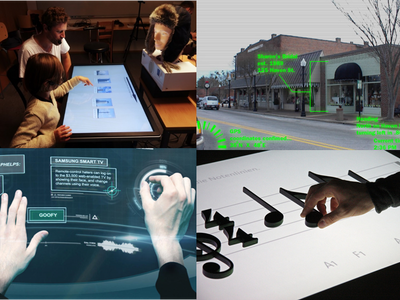The course gives the students theoretical and practical introductions to multi-modal communication and different HCI techniques.
The main focus of the course is on technologies for the transfer of information
- from the user, such as speech recognition, touch screens or tracking of eyes and gestures, and
- from the computer, such as unconventional visual representations, speech synthesis, rendered sounds and haptic feedback.
Particularly, the effects of combining different modalities are considered.
After passing the course, the student should be able to:
- describe how alternative or multi-modal HCI interfaces work, that utilise the latest technology
- evaluate strengths and weaknesses of multi-modal interfaces
- implement HCI interfaces that use new interaction technologies, for limited tasks
- suggest efficient design solutions for new interfaces that use different modalities
in order to be able to
- deepen her/his knowledge of new modalities of interaction in advanced courses
- exploit multimodality in applied projects
- choose an appropriate interface for a given task, from HCI and technical perspectives.
